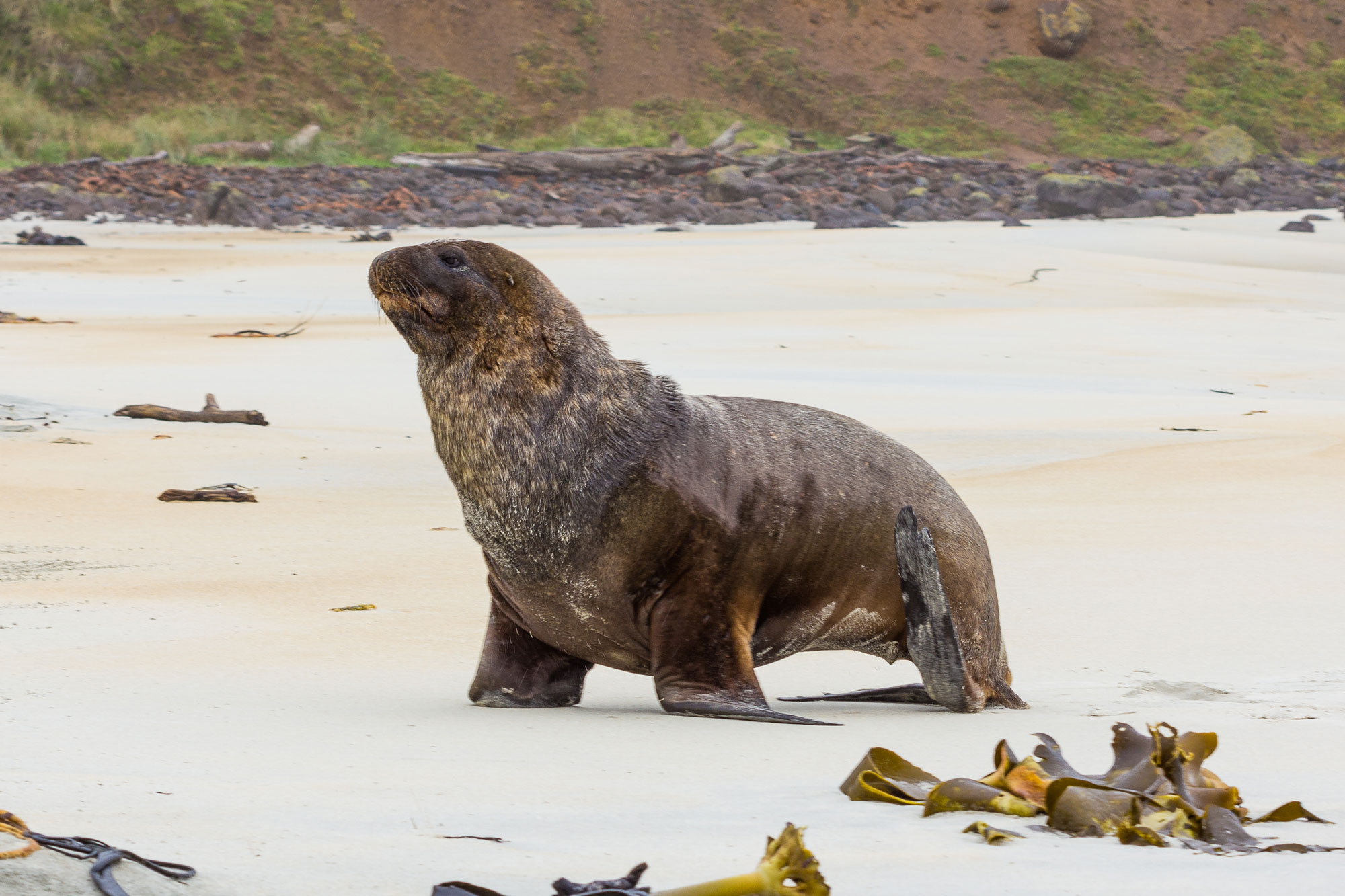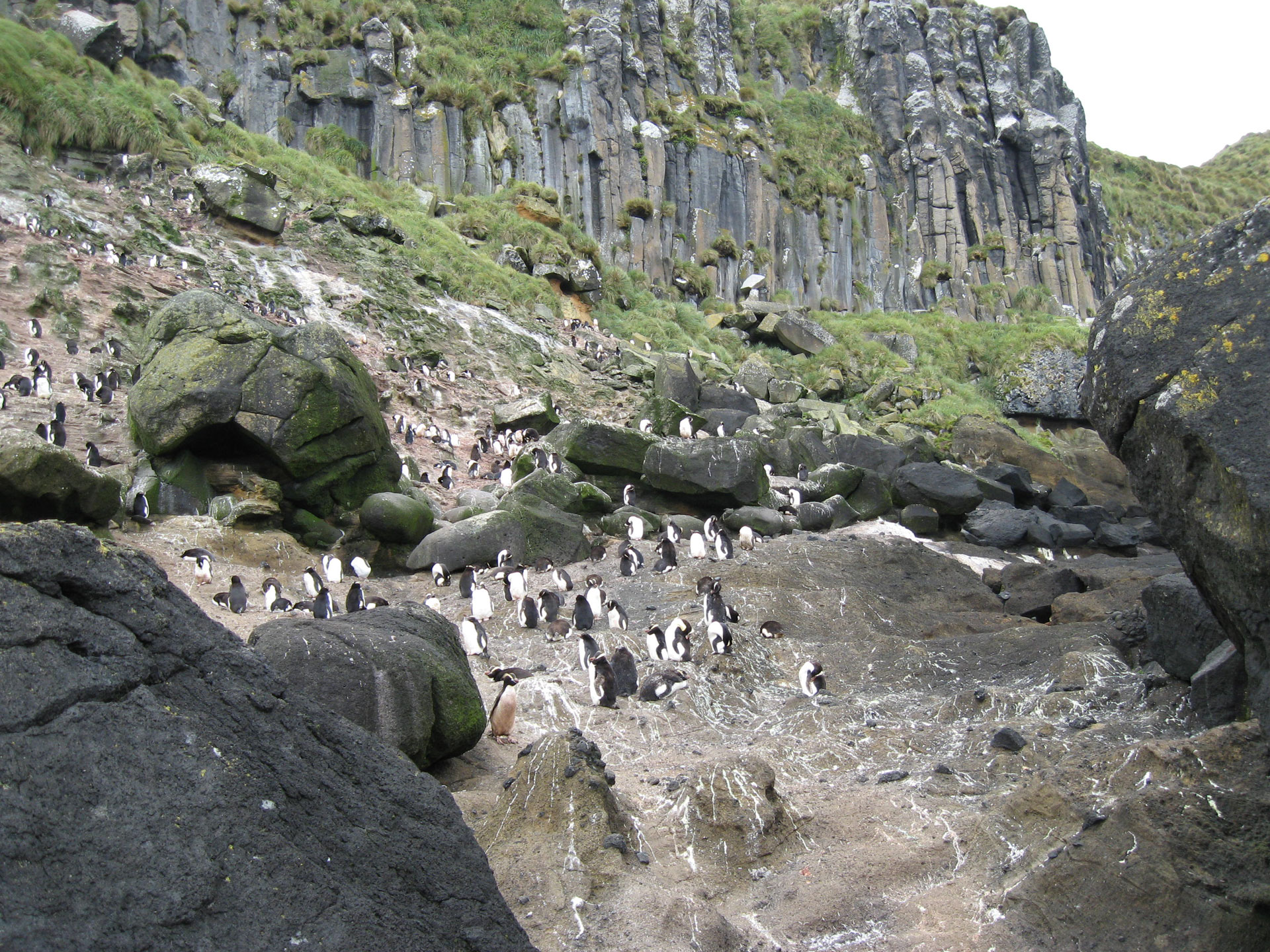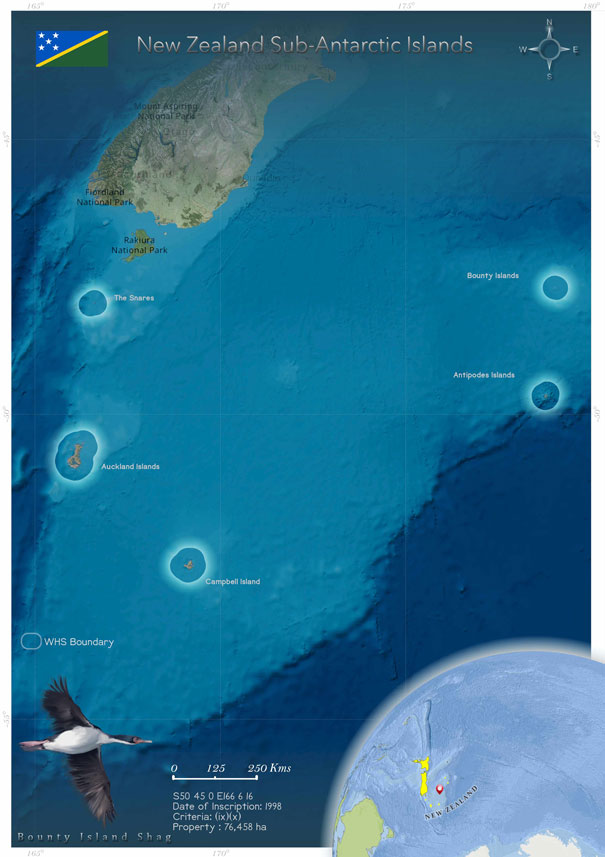
New Zealand Sub-Antarctic Islands (877)
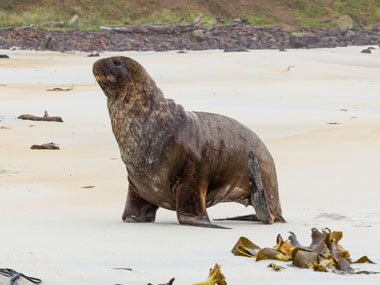 The New Zealand Sub-Antarctic Islands (NZSAI) were inscribed as a World Heritage Site in 1998 under the “Natural” category. The property lies between the Antarctic and Subtropical convergences and encompasses five island groups covering an area of 764.58 km2. The site is considered New Zealand’s most remote protected natural area, without any anthropogenic disturbances. The site has unique fish and marine algal assemblages and exhibits a high degree of endemism. More than 95% of the world’s population of the New Zealand sea lion are found here, where the species breeds. The current threats identified are growing tourism and invasive/non-native/alien species. Overall, the property is mostly intact and has a highly effective management system in place.
The New Zealand Sub-Antarctic Islands (NZSAI) were inscribed as a World Heritage Site in 1998 under the “Natural” category. The property lies between the Antarctic and Subtropical convergences and encompasses five island groups covering an area of 764.58 km2. The site is considered New Zealand’s most remote protected natural area, without any anthropogenic disturbances. The site has unique fish and marine algal assemblages and exhibits a high degree of endemism. More than 95% of the world’s population of the New Zealand sea lion are found here, where the species breeds. The current threats identified are growing tourism and invasive/non-native/alien species. Overall, the property is mostly intact and has a highly effective management system in place.
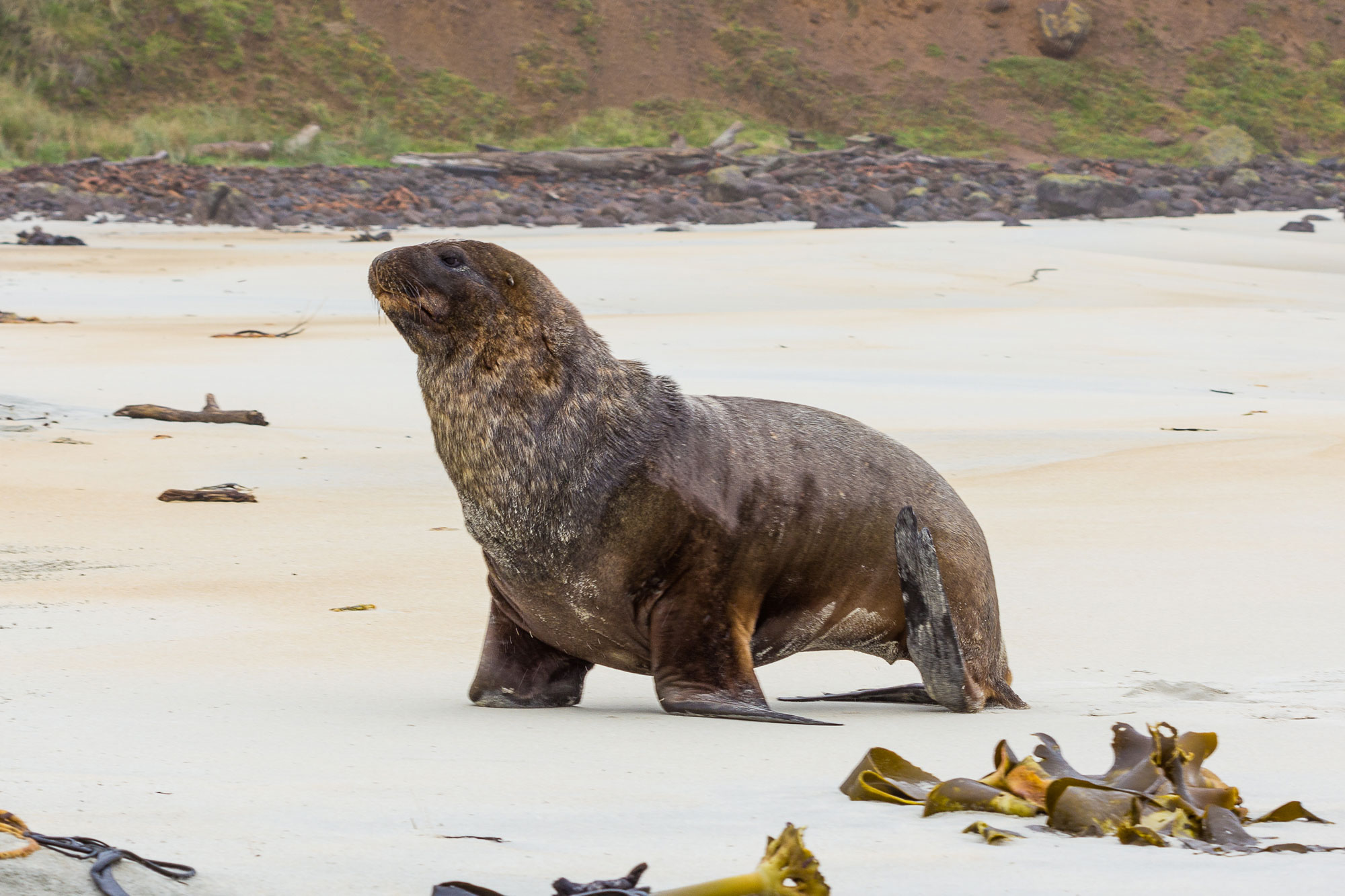 The New Zealand Sub-Antarctic Islands (NZSAI) encompass five island groups that lie between latitudes 47o and 53o south: Snares Islands/Tini Heke, Bounty Islands, Antipodes Islands, Auckland Islands/Motu Maha and Campbell Island/Motu Ihupuku and the islands surrounding the heritage site. The World Heritage status also extends to the marine environment out to 12 nautical miles from each group. With a total land area of 76,458 ha, the marine area is 1,400,000 ha. These constitute one of New Zealand's remotest protected natural areas, including some of the world's least modified islands.
The property lies between the Antarctic and Subtropical convergences and have high levels of productivity and endemism. Their biodiversity is rich, and the wildlife population densities are high. While the NZSAI are all located on the Pacific Tectonic Plate, each island hosts distinctive plants, birds, invertebrates, marine mammals, fish and marine algal assemblages. The factors responsible for this variability are the different geological history and age of each island group and their geographical isolation from mainland New Zealand and from each other.
The most unique features to note here are the abundance and diversity of the pelagic seabirds and penguins that utilize the islands for breeding. There are 126 species of bird, including 40 seabirds, eight of which are endemic. The islands support major populations of 10 of the world's 22 species of albatross, and almost 2 million sooty shearwaters nest on Snares Island alone. The land birds also display surprising diversity. Considering the limited land area available, the site hosts the world's rarest ducks. More than 95% of the world's population of the New Zealand sea lion (formerly known as Hooker's sea lion) breeds here, and the marine environment provides critical breeding areas for the southern right whale.
The New Zealand Sub-Antarctic Islands (NZSAI) encompass five island groups that lie between latitudes 47o and 53o south: Snares Islands/Tini Heke, Bounty Islands, Antipodes Islands, Auckland Islands/Motu Maha and Campbell Island/Motu Ihupuku and the islands surrounding the heritage site. The World Heritage status also extends to the marine environment out to 12 nautical miles from each group. With a total land area of 76,458 ha, the marine area is 1,400,000 ha. These constitute one of New Zealand's remotest protected natural areas, including some of the world's least modified islands.
The property lies between the Antarctic and Subtropical convergences and have high levels of productivity and endemism. Their biodiversity is rich, and the wildlife population densities are high. While the NZSAI are all located on the Pacific Tectonic Plate, each island hosts distinctive plants, birds, invertebrates, marine mammals, fish and marine algal assemblages. The factors responsible for this variability are the different geological history and age of each island group and their geographical isolation from mainland New Zealand and from each other.
The most unique features to note here are the abundance and diversity of the pelagic seabirds and penguins that utilize the islands for breeding. There are 126 species of bird, including 40 seabirds, eight of which are endemic. The islands support major populations of 10 of the world's 22 species of albatross, and almost 2 million sooty shearwaters nest on Snares Island alone. The land birds also display surprising diversity. Considering the limited land area available, the site hosts the world's rarest ducks. More than 95% of the world's population of the New Zealand sea lion (formerly known as Hooker's sea lion) breeds here, and the marine environment provides critical breeding areas for the southern right whale.
Criterion (vii)
Isolation, climatic factors, and seven degrees of latitudinal spread have combined to significantly influence the biota of the islands. Consequently they provide scientific insights into the evolutionary processes affecting widely-spread oceanic islands, varying from relatively mature endemic forms to relatively immature taxa, constituting a fascinating laboratory for the study of genetic variation, speciation and adaptation, particularly in the insulantarctic biogeographic province. Evolutionary processes, such as the loss of flight in birds and invertebrates, offer unique opportunities for research into island dynamics and ecology. Another outstanding feature is the preponderance of 'megaherbs' within the plant biodiversity. These large herbs, often with brightly coloured flowers are considered to display unique evolutionary adaptation to the distinctive sub-antarctic climate - with its cloud cover (and lack of solar radiation), lack of frosts, strong winds, and high nutrient levels (derived from seabird transference of nutrients).
Criterion (viii)
The NZSAI, and the ocean that surrounds and links them, support an extraordinary and outstanding array of endemic and threatened species among the marine fauna, land birds, and invertebrates. As a group they are distinct from all other island groups, having the highest diversity of indigenous plants and birds. Of particular significance: the most diverse community of seabirds in the world with eight species endemic to the region; including four species of albatross, three species of cormorants (one of which, the Bounty Island Shag, is the world's rarest cormorant) and one species of penguin; 15 endemic land birds including snipe, parakeets and teal; breeding sites of the world's rarest sea lion (the New Zealand (or Hooker's) sea lion); and a significant breeding population of the southern right whale. Together with neighbouring Macquarie Island, the NZSAI represent a Centre of Plant Diversity and have the richest flora of all the sub-antarctic islands with 35 endemic taxa. The "megaherbs' are unique to the NZSAI and Macquarie Island. The Snares Group and two of the Auckland Islands are of particular biodiversity conservation significance due to the absence of any human and exotic species modification.
Status
The NZSAI have benefited from their remoteness, which provides them with a high degree of natural protection. With their geographical isolation from mainland New Zealand and from each other, the NZSAI include some of the world's most unmodified islands. In particular, the Snares and two islands in the Auckland group (Adams and Disappointment, are among the last substantial areas in the world harbouring vegetation essentially unmodified by human impacts. Many of the islands remain in a virtually pristine condition, being rat-and cat-free and rarely visited by humans. To gain a better understanding of the nearshore marine ecosystems, three New Zealand sub-Antarctic islands (Snares Islands, Auckland Islands and Campbell Island), were sampled. The Auckland Islands and Campbell Island have large inlets dominated by mobile crustaceans, and the biological trends followed the gradients in marine exposure along inlets. In contrast, the Snares Islands are mostly exposed coast and had a higher diversity of fish species that are also found in mainland New Zealand. We suggest that differences in nearshore marine communities between these islands are likely due to the combined effects of habitat availability, biogeography and ocean temperature (Clark et al. 2019). In 2008, a stakeholder forum was convened to consider additional marine protection measures in the sub-Antarctic region. As a result of that process, three new marine reserves have been selected and approved and are awaiting implementation. These reserves will protect 100% of the territorial sea surrounding Antipodes Island, approximately 58% of the territorial sea around the Bounty Islands and approximately 39% of the territorial sea around Campbell Island. Additionally, restrictions will be placed on fishing methods in the remaining territorial sea areas around these island groups. Increased tourism demand has resulted in a significant increase in the number of tourists and activity within the property, and the challenge is to manage this increased demand without disturbing the site's integrity while protecting the experience tourists are seeking and most importantly ensuring protection of the marine environment immediately and in the long term. The Conservation Outlook shows the status of NZSAI as "good having low to very low threat" in the property and mentions that the management system is highly effective.
